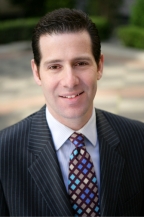In a new paper published in the New England Journal of Medicine, a team of doctors and researchers including Dr. Michael Kaplitt describe the first-ever implantation of a patient’s own progenitor cells into the putamen region of the brain. The patient, who suffered from idiopathic Parkinson’s disease, was treated on both left and right sides of his brain, six months apart. At 18 month and 24 months post-treatment, he shows improvement or stabilization of his symptoms; since the progenitor cells were his own there is no need for immunosuppression.
The science originated at Massachusetts General and Dana Farber Cancer Institute in Boston, with a team that developed the technique and tested it on animal models in preclinical trials. In January 2017 the team received FDA approval to perform the transplant under “compassionate use” rules, and they identified Weill Cornell Medicine as the best equipped facility, and Dr. Kaplitt as the best neurosurgeon, for the procedure. In September of 2017, Dr. Kaplitt received the cells flown down from Boston and performed the implant into the waiting patient. Six months after that the patient underwent his second procedure, this one in Boston. Two years later, the patient is doing well and the team is cautiously optimistic, hoping that a full clinical trial will replicate their results.
“This was the first patient-derived stem cell transplant for Parkinson’s disease in the history of the world,” said Dr. Kaplitt, Vice Chair for Research and Director of the Movement Disorders Program at Weill Cornell Medicine. “It required no fetal tissue and no immunosuppressants, which is very significant, and I’m very proud to be a part of it.”
The procedure joins the list of firsts for the Weill Cornell Functional Neurosurgery Program. In 1994 Dr. Kaplitt developed the technology for brain gene therapy that is now used in most labs and human trials of gene therapy for neurological disease. In 2003 he performed the first human treatments of gene therapy for Parkinson’s disease, which led to the first — and to date only — successful study of a gene therapy for Parkinson’s disease compared with a sham surgery arm. In 2016 he was the first in New York to use high-frequency focused ultrasound to successfully treat a patient with essential tremor and in 2018 he performed the first focused ultrasound treatment for Parkinson’s disease in a recently completed international multi-center study. Recently he reported with colleagues at the University of West Virginia on the first use of focused ultrasound to temporarily open the blood-brain barrier of the hippocampus in subjects with Alzheimer’s disease, which is a crucial step toward non-invasive restoration of brain function for various neurological and neurodegenerative disorders.


